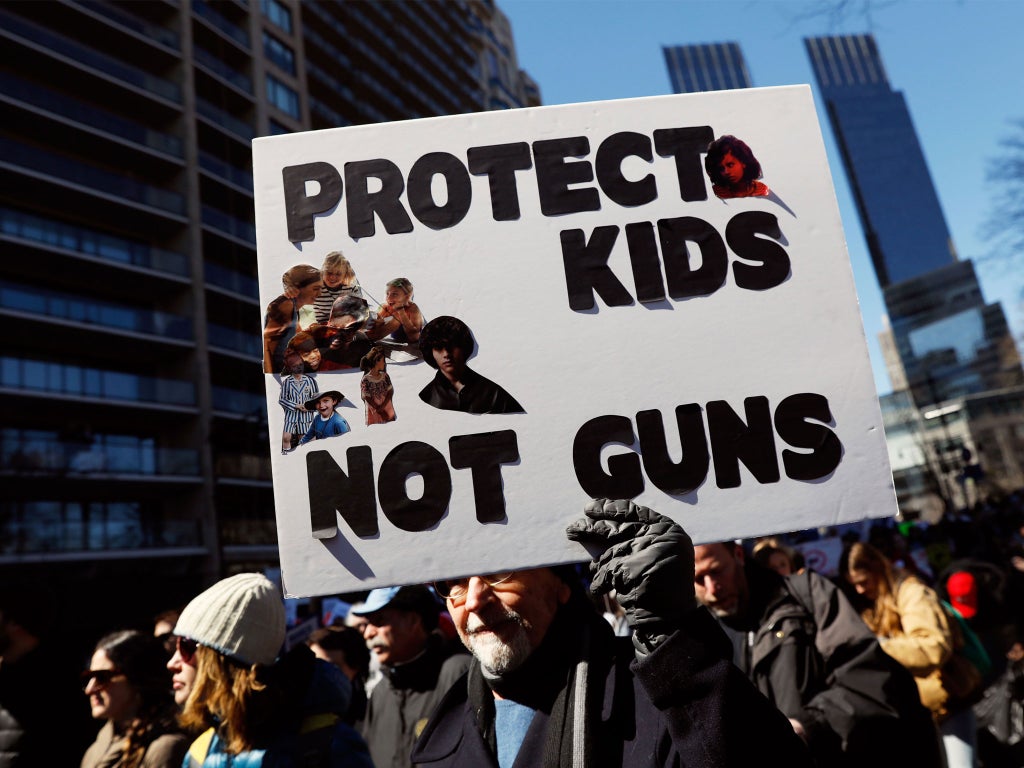
Guns now kill more children and teenagers in the United States than car accidents, drug overdoses or cancer, according to new research.
The stunning finding came after researchers analysed decades worth of mortality data from the Centers for Disease Control and Prevention (CDC), says the The New England Journal of Medicine.
The study found that gun-related injuries in 2020 claimed 4,300 young people’s lives, which was a jarring 29 per cent jump from the year before - and more than twice as high as the relative increase when compared to the US general population.
The authors of the research letter published in The Journal , wrote that this was the first time in at least “40 years” that firearm-related deaths among children had outpaced motor vehicle crashes among kids.
They stated that firearm related deaths rising while motor vehicle crash deaths lowered, demonstrates how creating policies for injury prevention can reduce injuries and deaths — and, on the flipside, how a public health problem can be exacerbated in the absence of such attention.
Car accidents, which used to be the leading cause of death among adolescents, by comparison claimed 3,900 people between the ages 1 to 19 in 2020.
“In 2000, motor vehicle–related injuries resulted in 13,049 deaths among young people,” authors in a separate analysis published this week with the New England Journal of Medicine wrote.
“Twenty years later, there has been a nearly 40 per cent decrease, with 8234 motor vehicle traffic deaths (8.31 per 100,000 persons) recorded in 2020.”
In that same time period, the number of firearm-related deaths among children, adolescents, and young adults increased from 6,998 to 10,186.
Though the authors are cautious to prescribe any one explanation for this trend, they do acknowledge that the Covid-19 pandemic could have contributed but does not explain away the past two decades of gun related deaths rising.
“Although the new data are consistent with other evidence that firearm violence has increased during the Covid-19 pandemic, the reasons for the increase are unclear, and it cannot be assumed that firearm-related mortality will later revert to prepandemic levels,” the co-authors wrote.
The authors do note that firearm homicides, which grew by 33 per cent between 2019 and 2020, largely drove the recent uptick, as the crude rate of firearm suicides increased by just 1.1 per cent over the same time period.
“The increasing firearm-related mortality reflects a longer-term trend and shows that we continue to fail to protect our youth from a preventable cause of death,” the letter closed, before calling on the funding, which they don’t specify, for the prevention of community violence that has been proposed in federal infrastructure legislation to be maintained.
Gun ownership did increase over the course of the Covid-19 pandemic, according to a study published last year in the Annals of Internal Medicine which found first-time gun owners more than doubled between January 2020 and April 2021, compared to the year before.
US President Joe Biden ran his 2020 campaign on the promise of delivering on gun control, and while policies around universal background checks and banning assault weapons remain on the backburner, the US leader did manage to take small steps toward reining in the industry earlier this month.
While delivering a speech about the dangers that so-called “ghost guns” pose on 11 April, US President Joe Biden introduced a series of new measures that would regulate the DIY-firearms that are frequently purchased as kits online and oftentimes lack serial numbers, making it difficult for law enforcement to track them.
“We need Congress to pass universal background checks. Ban assault weapons and high-capacity magazines. And eliminate gun manufacturers’ immunity from liability,” he tweeted out the same day.







